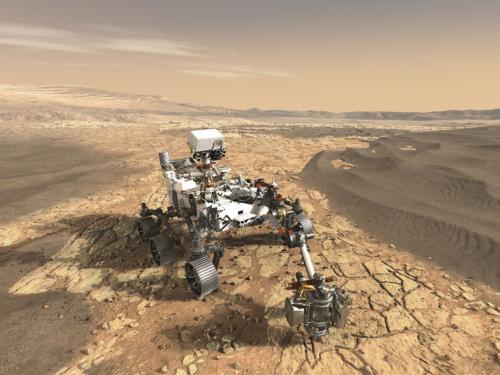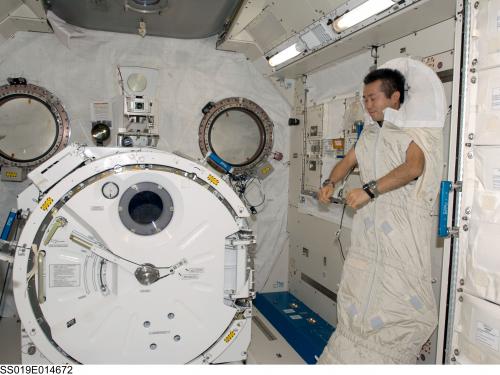

Stories of daring, stories of technological feats, stories of prevailing against the odds ... these are the stories we tell at the National Air and Space Museum. Dive in to the stories below to discover, learn, and be inspired.
Showing 1 - 8 of 8

February 27, 2025
The oldest Earth rocks we have are 4.3 billion years old, and samples we've brought back from the Moon are even older. But what what does that have to do with craters on Mars?

September 12, 2024
It's a bird? It's a plane? Its a guy pretending to be a bird?? We have a very odd aircraft in the collection.

September 21, 2022
Antarctica’s environment is the most extreme on our planet. Now, an aerial revolution has begun with uncrewed aerial vehicles (UAVs) flying in this challenging environment.

February 16, 2021
To get the answer, we have to know what to look for and where to go on the planet for evidence of past life. With the Perseverance rover set to land on Mars on February 18, we are finally in a position to know.

June 07, 2018
Today, NASA announced some exciting new discoveries made by its Curiosity rover. Let our experts at the Museum help break down these exciting new findings.

January 24, 2017
A human mission to Mars will take anywhere from two and a half to three years. That is NASA’s best estimate, with each leg of the trip taking six months and including an 18 to 20 month stay on the Red Planet. That does not sound like an extremely long-term prospect until one considers the fact that the world record for the longest single stay in Earth orbit belongs to Soviet cosmonaut and physician Valeri Poliakov at 437 days and 18 hours aboard the Mir space station in 1994-1995. That is less than half the time it would take to complete a mission to Mars.

August 31, 2016
It’s the little things we take for granted here on Earth; things like being able to lie down on a bed and not have it float away, or wake up without suffocating on our own exhaled carbon dioxide. While interning at the Museum, I’ve spent time researching several of those things we take for granted but astronauts in space cannot.

July 09, 2011
Moonbeams, rockets, and Blue Angels are not just showcased in the National Air and Space Museum — they are in the garden too!